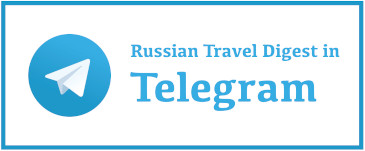How lastminute.com is tackling digital, data and differentiation
Differentiating in the travel distribution landscape, which is becoming less fragmented and more competitive than ever, is complicated. “The travel industry might be growing but the number of possible distribution channels are shrinking, and they’re also becoming more expensive,” says Guk Kim, Chief Growth Officer, lastminute.com, who is speaking at the upcoming Revenue and Optimisation Growth Summit, (Amsterdam, 26-27). Yet, despite global challenges, the travel and tourism industry continues to grow. According to the World Travel and Tourism Council, the industry grew at 3.9% to a record $8.8 trillion in 2018 and for the eighth consecutive year outstripped global GDP. However, Kim, whose main responsibility is growing lastminute.com’s flight business and all-important ancillary revenues, says most users today look to just a few portals for their travel needs. In Europe, for example, the dominant player in the hotel space is booking.com, while Skyscanner, Kayak and increasingly Google Flights are the go-to metasearch channels for flights.
Everything today involves data and the best companies are able to use the data they have to make decisions
To address the challenges, a major thrust over the past two years has been to put in place the data infrastructure to be more competitive and to hire people with the right skill sets. “We have made a tremendous effort to hire data scientists,” says Kim, adding that across the organisation mathematics and statistics have become the most valuable skills. “Everything today involves data and the best companies are able to use the data they have to make decisions,” he says. This is true even within marketing teams because while there is still a need for creativity, the ability to analyse data is crucial in targeting the right clusters of customers.
This data-driven focus is paying off for the group. In the first half of 2019, the group reported net earnings €12.2m versus €0.2million in the first half of 2018. Growing market share is becoming increasingly important, and it is one of the company’s KPIs alongside the usual bookings and clicks. On the latter score, thanks to being a well-known brand, lastminute.com is in fairly good shape.
In the flight business, getting the price right is crucial but especially tricky. If you take a flight that leaves from Milan to London, there are countless variables to consider that might lead to a change in price. For example, prices may vary widely depending on what time the customer wishes to fly. Other factors to consider are whether they will they check-in bags, buy insurance, rent a car, book a transfer and so on. This differs from the hotel business, which just has the date and length of stay to consider, says Kim, who will be speaking in Amsterdam on November 26-27.
For this reason, lastminute.com relies on technology to help manage their flights business. In the first instance, competitive analysis tools help the group to monitor the competition in order to understand where they might have the edge. Sometimes in order to win a customer, tweaks in the system have to be made, and these tools help the group to understand when that might be the case. It also addresses bugs in the system and monitors where the mistakes have occurred. “This is fascinating but of course also very complicated,” Kim admits.
In A-B testing between a human and machine-based analyst, humans today still beat the machines
In addition, the group, like many major travel companies, relies on dynamic pricing tools, which allows the business to set flexible prices for products or services based on current market demands. lastminute.com is using so-called machine learning-based pricing methods to dynamically price ancillary products but is still seeing varied success rates. In fact, argues Kim, in A-B testing between a human and machine-based analyst, humans today still beat the machines. He acknowledges, however, that this “will probably change completely over the next three to five years” as the technology develops.
One recent major success is lastminute.com’s dynamic packaging partnership, which includes hotels and flights, with Booking.com. Today lastminute.com is the supplier for Booking.com’s packages, which is now live in certain countries. “Booking.com is an iconic brand and we see them choosing to work with us as a major stamp of approval. It really means we are doing a good job,” he concludes.
While there are challenges, Kim argues that the OTAs and the airlines have made great strides in selling ancillaries during the booking flow such as transfers, car rentals, hotels and so on. The future opportunity is to sell ancillaries in the post-booking phase but it is early days.
“What is happening today is that we are sometimes randomly showing whatever we have to our customers rather than getting the personalisation totally spot on,” admits Kim, who is speaking in Amsterdam. However, in the future, the investment must be to understand how to personalise the offering with the right products to the right customer based on their profile. However, although the technology is already there to achieve true personalisation, OTAs are often missing the inventory. For example, if a customer is flying from Milan to Miami with a family of four, chances are that they want to buy a ticket to Disneyland in Florida. However, it may be that the OTA hasn’t yet integrated that offering because it is never quite as simple as it looks.
For a company like lastminute.com, which is selling flights around the world, a major consideration is which integration will deliver the highest potential return on investment. For example, it may have 5,000 customers flying to Disneyland, but 100,000 customers flying elsewhere around the world. Therefore, the priority must be to integrate the low hanging fruit like car rentals rather than Disneyland tickets for a smaller number of customers.




